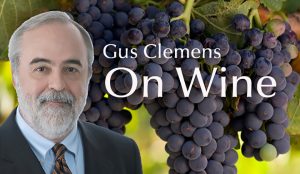Most wines are made for immediate consumption; some wines benefit from bottle aging. What’s the difference?
Young wines present what are called primary flavors: cherries in cabernet sauvignon, plum in merlot, apple in chardonnay, grassiness in sauvignon blanc. There also are secondary flavors generated by the winemaking techniques: vanilla and toast flavors from oak, butter from malolactic fermentation.

When wine ages, tertiary flavors appear: bold fruit flavors become more subdued and more like dried fruits. Flavors that were masked by bold fruits emerge: honey, stone, mushroom.
Wine is a living, evolving thing. Alcohol, sugar, and acid levels stay the same; wines that are tart, highly alcoholic or sweet will stay about the same, although tartness may soften in some wines. But a lot more is going on.
Texture—mouthfeel—changes with age. White wines become viscous and oily. Reds feel smoother because in young reds tannins repel each other and remain small enough to be suspended, but with age tannins form chains to become larger and heavier. Tannin chains reduce the surface area so they taste smoother, rounder, gentler. As tannins age longer, they fall out of suspension and become sediments.
Wine color changes with age. A young red often is a ruby-purple color. As it ages it turns to brick color, then tanned leather. Young whites are lemon or pale green. As they age they take on more gold tones, then amber. This is caused by oxidation, which comes from air in the bottle and permeability of the closure. Corks vary in how much air works into the bottle, even screwcaps allow some oxygen exchange.
In general terms, entry-level wines from quality makers can age up to five years. Wines with concentrated flavors and a balance of alcohol, acidity, and texture age best. Some wines are built to age and are not ready to drink for several years; in general, those makers do not even release bottles for many years.
Tasting notes:
• Domaine La Tour Vieille Collioure Les Canadells Blanc 2015: Maker opted for quality, magnificently succeeded at a price many wine drinkers can afford. $19-23 Link to my review
• Vallebelbo Cesare Pavese Barolo 2008 DOCG: Coming into its best after 10 years of aging. $32-37 Link to my review
• Paitin di Pasquero-Elia Sori’ Paitin Barbaresco 2012: Powerful, loaded with red fruit and dried fruit flavors; assertive tannins tamed by bottle age and balancing acidity. $43-52 Link to my review
• Avignonesi Desiderio Merlot Toscana IGT 2012: Fine food wine with complexity, lightness. $50 Link to my review
Last round: Wine helps convince me the world does not suck today.
